
Silesia
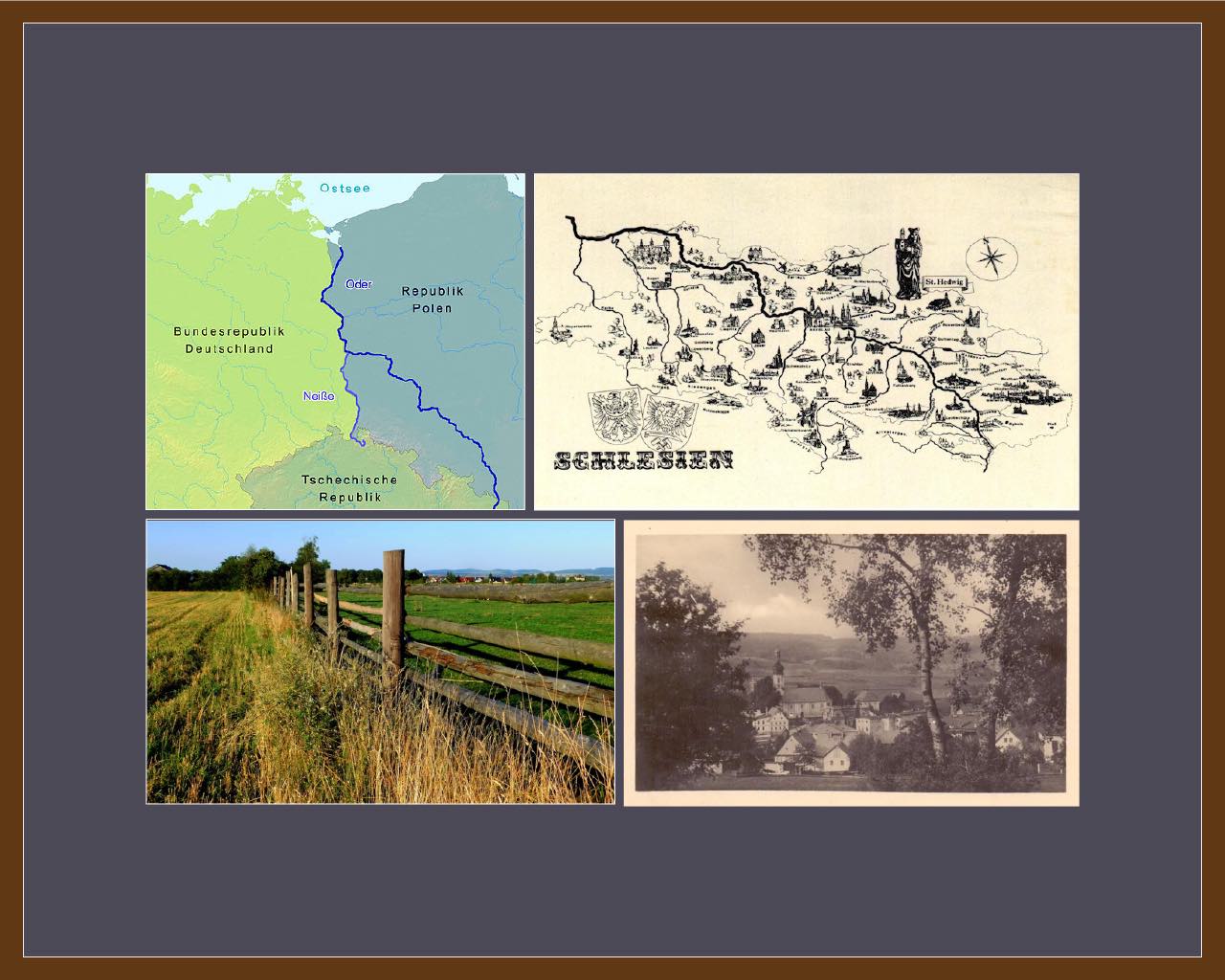
Outside of its cities and its industrial zones, Silesia is mostly rural, dotted with small towns and villages, and graced by the Oder river and Sudeten mountains.
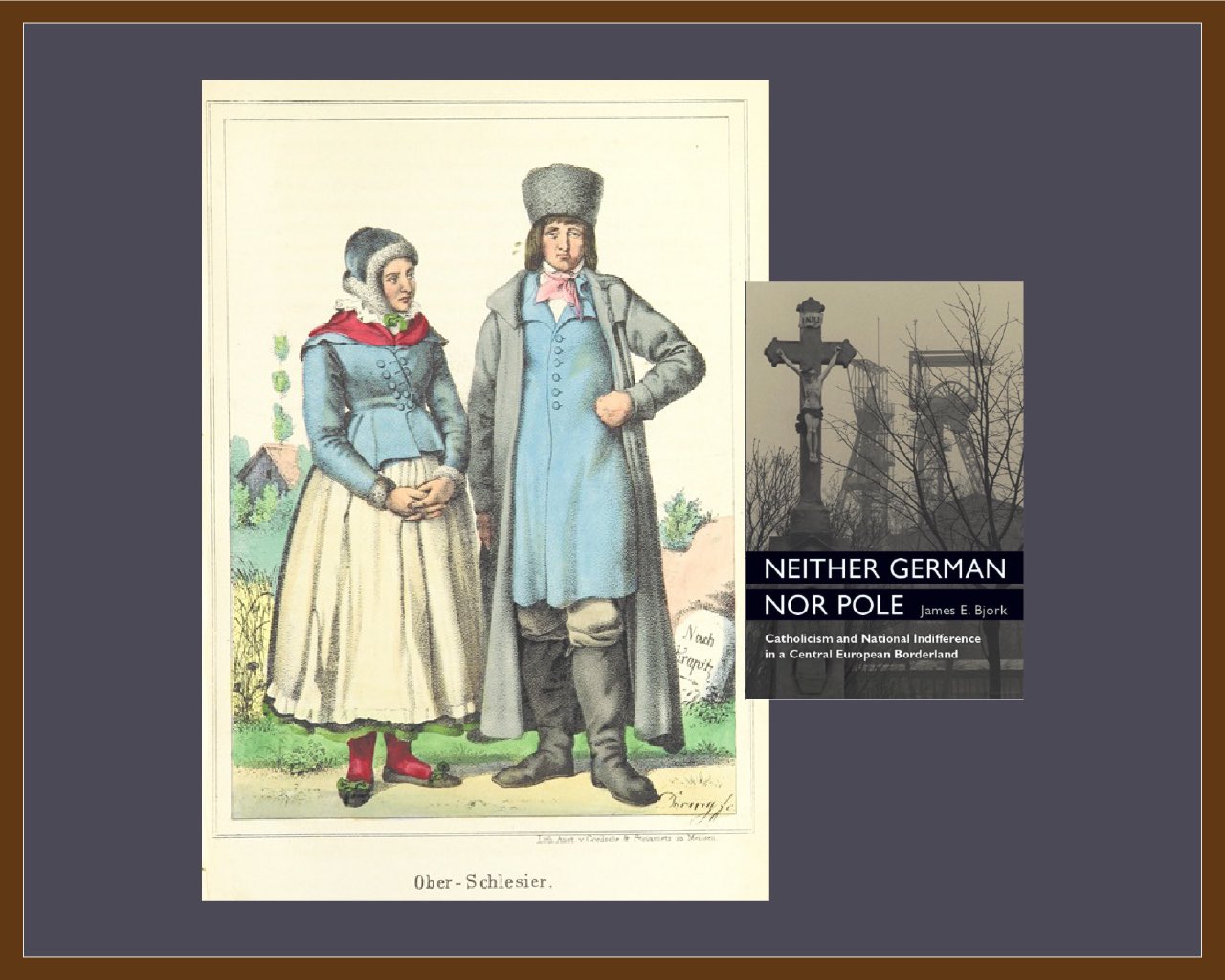
In the 13th century, German settlers began migrating to the Slavic region of Silesia. In 1742, Silesia was seized by Prussia, which became the German Empire in 1871. In the early 1900s, Upper Silesia ethnicity was ~ 60/40 (Polish/German).

The migration of German peoples over the centuries predating the emergence of nation-states. Notice how German culture tended to move along the rivers. German river-way mercantile skills, social order ("town rules"), civic and architectural design, and religion all contributed to this blended Slavic-Germanic region.
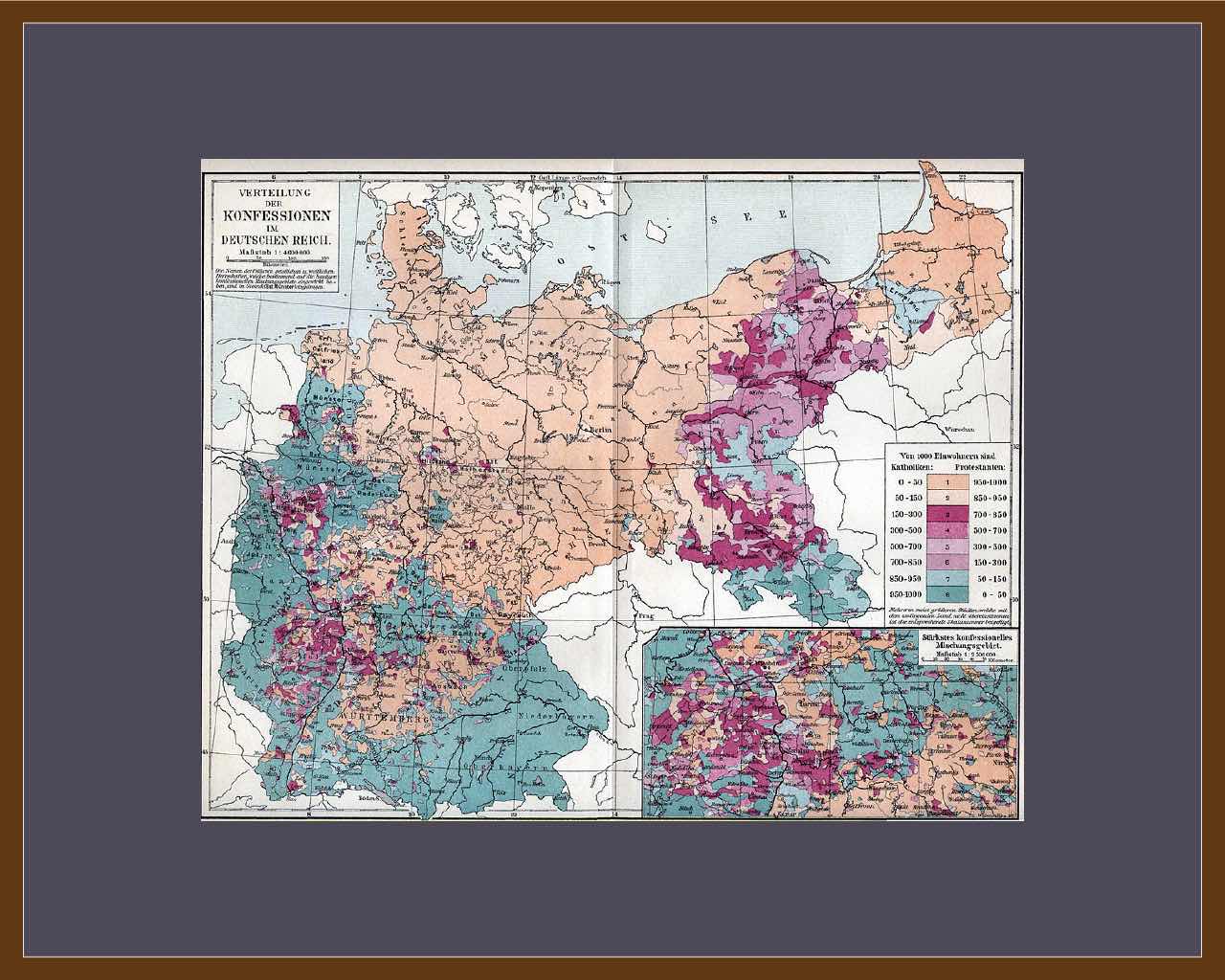
During the Holy Roman Empire, Catholicism spread throughout German lands. Then, Reformation triggered centuries of war in Europe. Silesia saw broad conversions to Lutheranism. Later ... the Austrian Hapsburg empire reinstituted Catholicism. Weathering epic sweeps of history (Reformation, two world wars, extermination campaigns, ethnic cleansing, communism), Polish Catholicism remains the dominant culture of the region today.
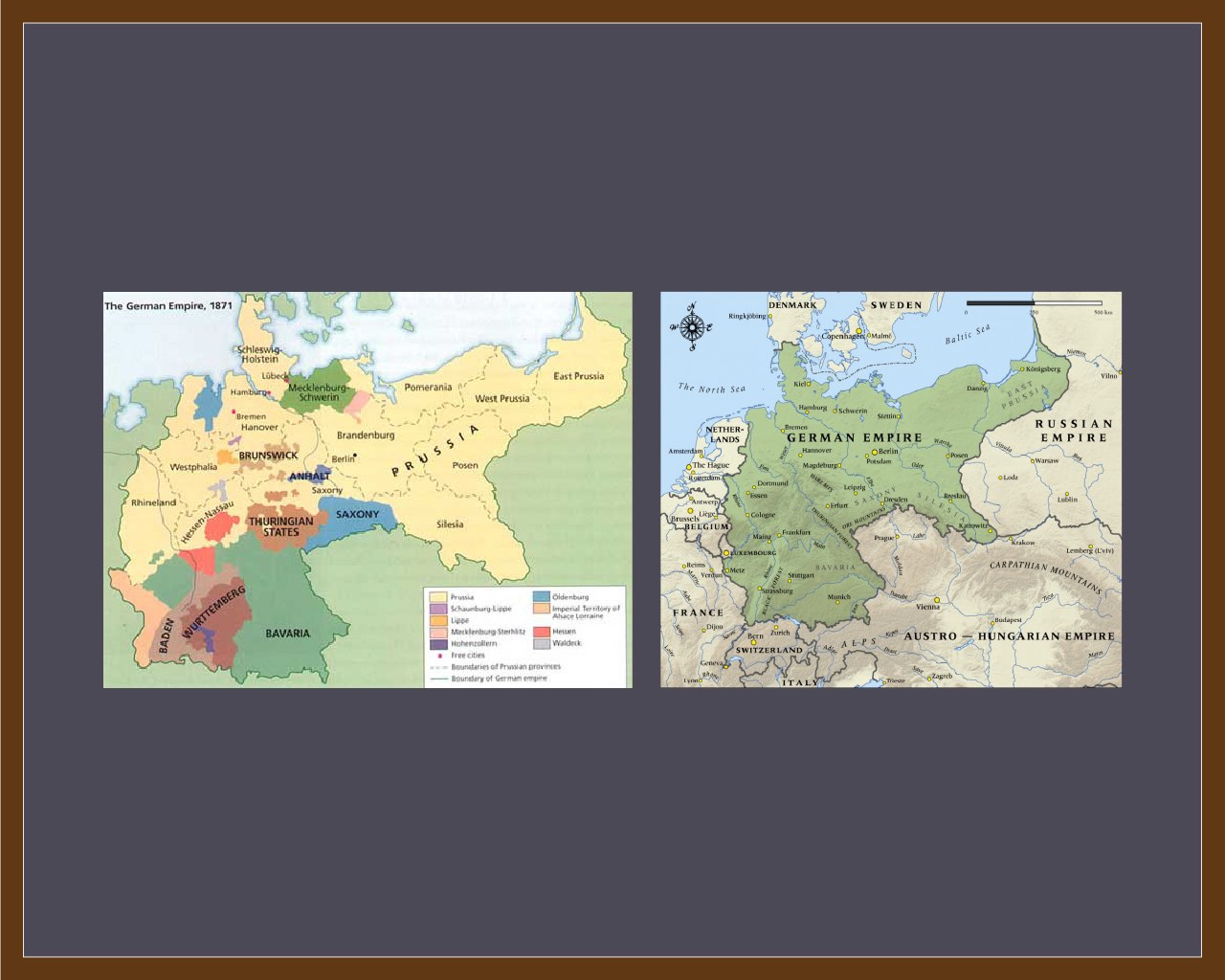
In 1871, the Prussian Empire united with Bavaria and other territories to form the German Empire (the so-called "Second Reich"). Silesia, having been yanked back and forth over the centuries between princes and kingdoms and empires, now had a new landlord.
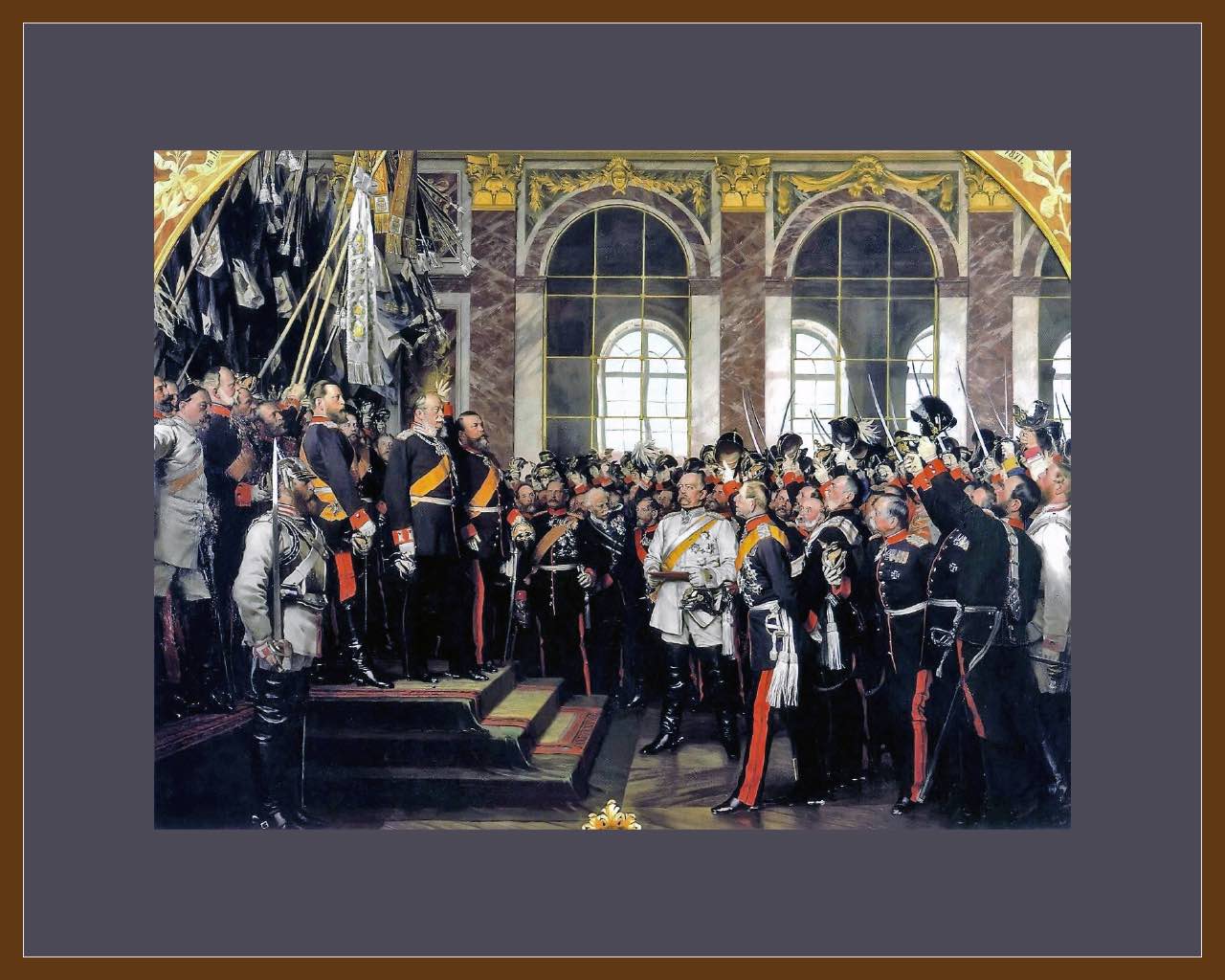
The coronation of Kaiser Wilhelm I marks the birth of the German Empire.
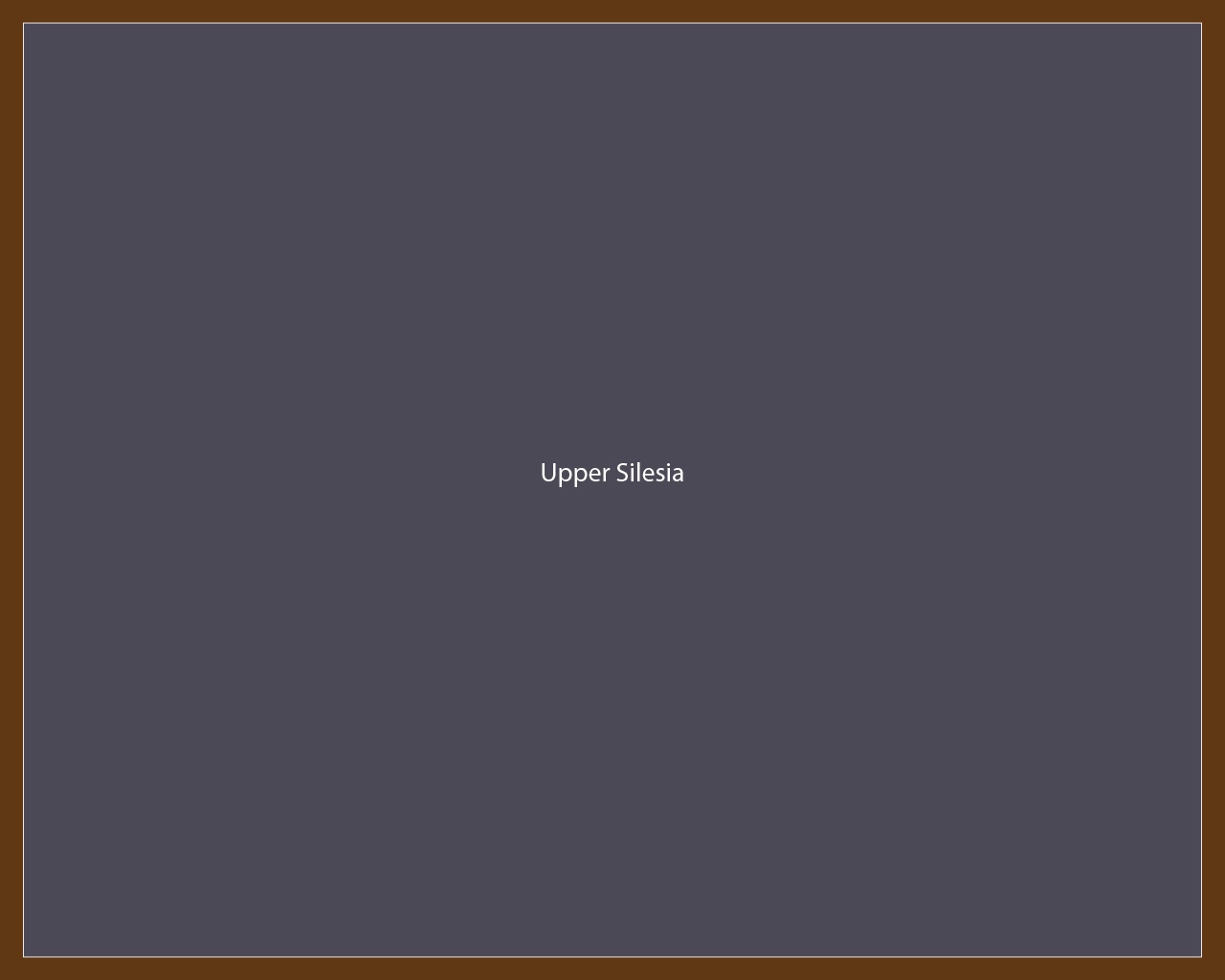
"What is an Upper Silesian? Is he a German, a Pole, a Prussian, simply an Upper Silesian, a Catholic, or perhaps even, just an abstract human being?" - Father Jan Kapica, 1906
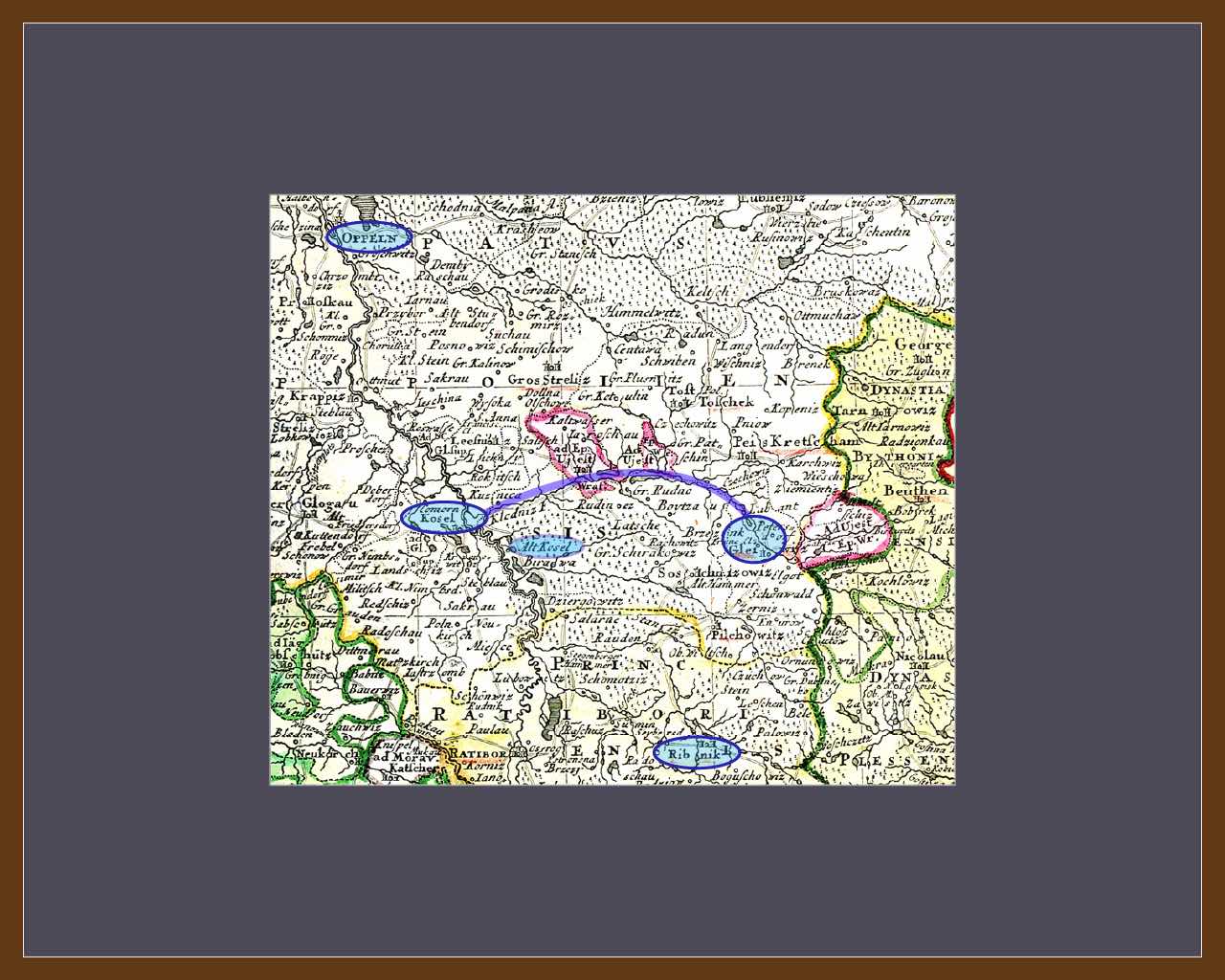
Cosel and Gleiwitz counties surged during the Industrial Revolution. Coal mining intensified; factories sprang up; and river and canal transport increased.
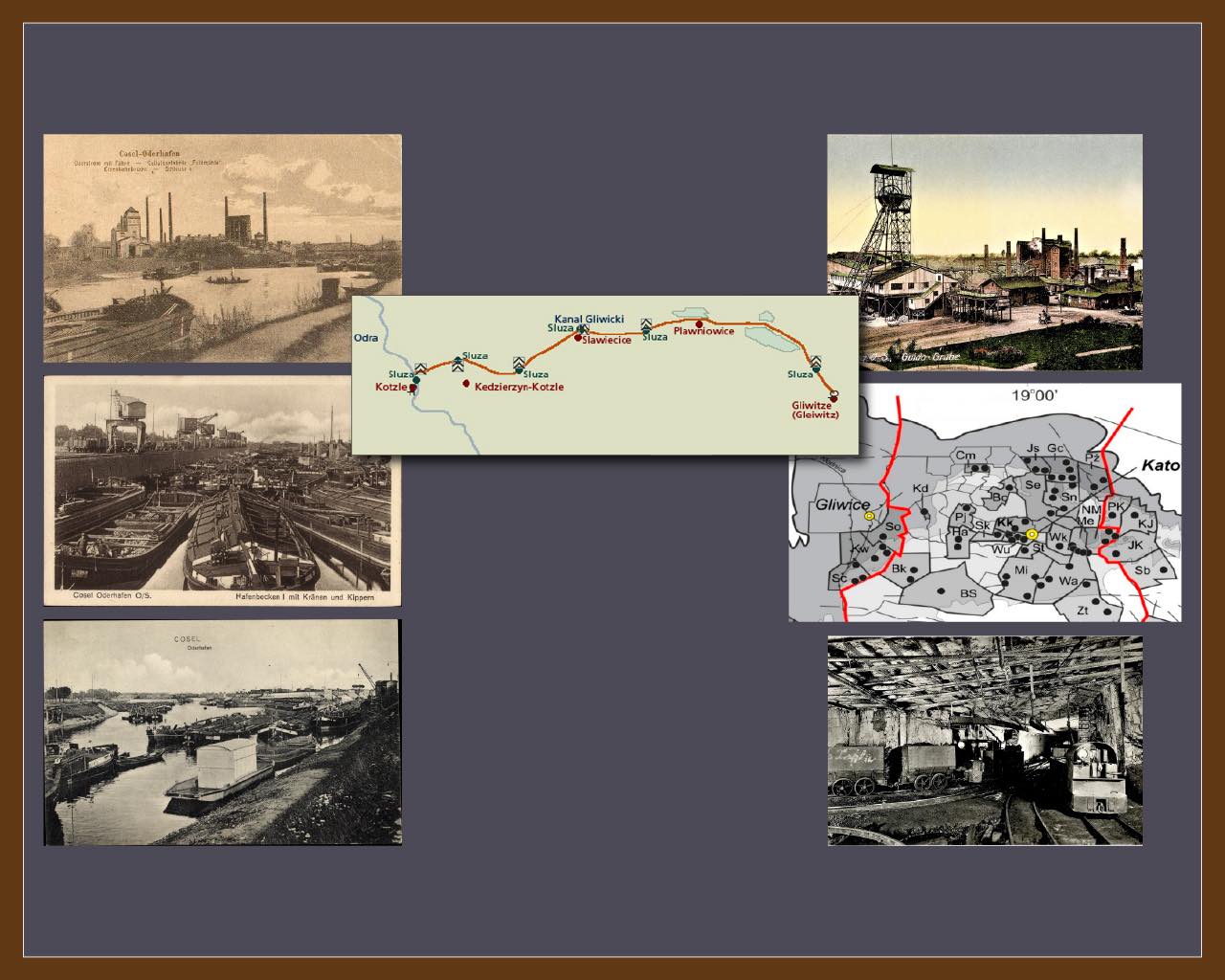
The Klodnitz canal connected Cosel and Gleiwitz.

Cosel town square
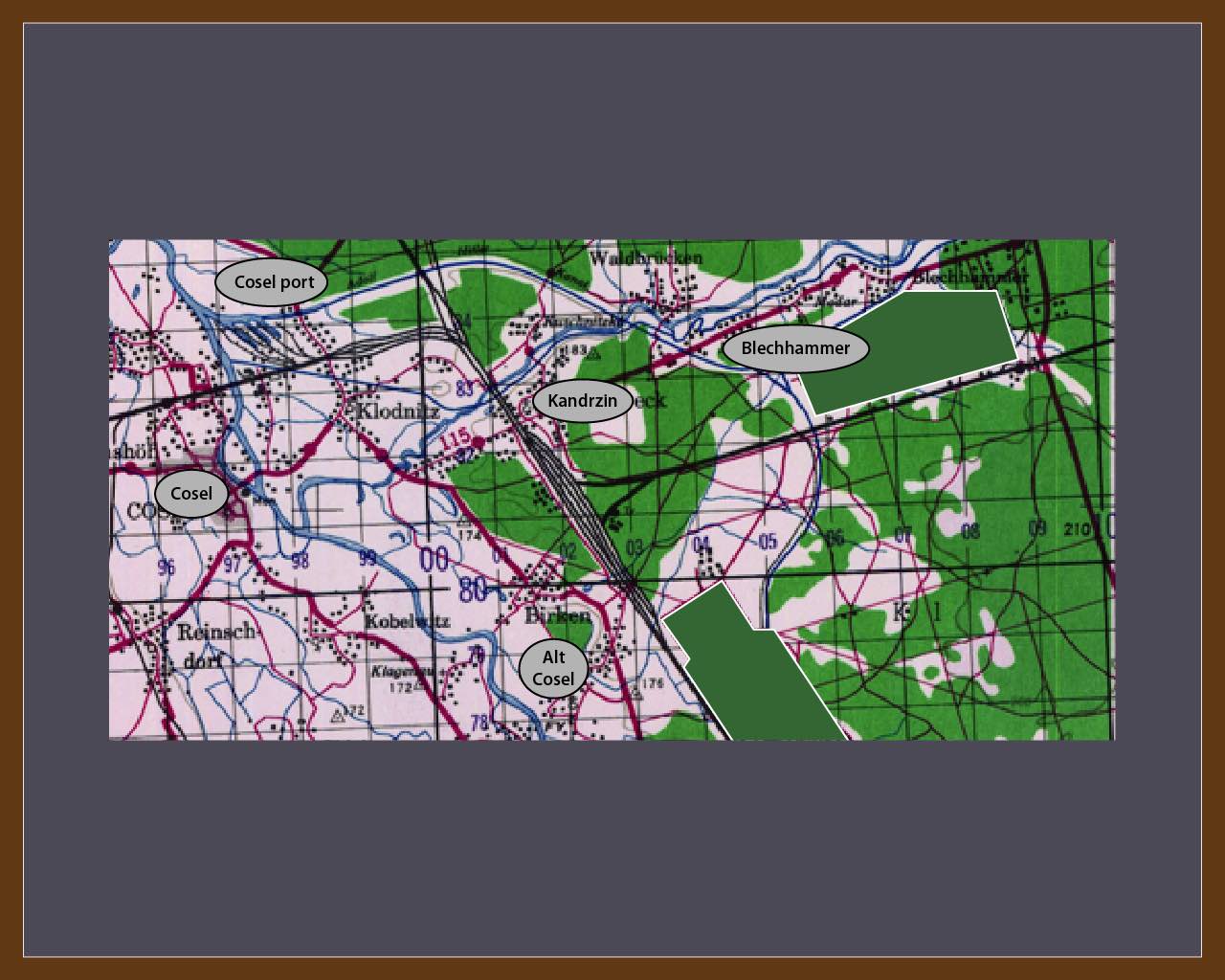
Cosel port was Europe’s largest inland port. East of the port was the village of Kandrzin where the new railroad had expanded, and Blechhammer village with its small complex of factories clustered along the canal.
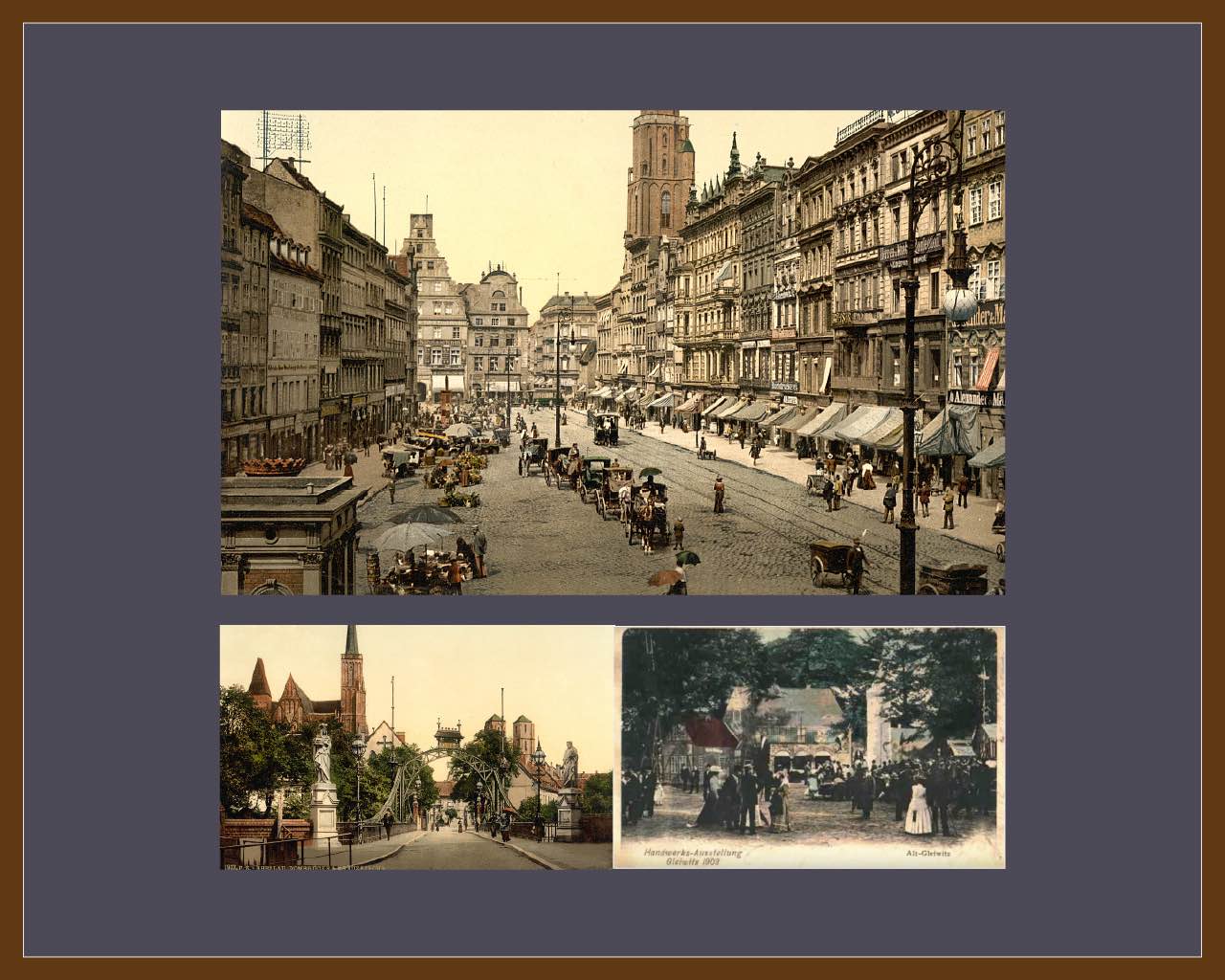
Gleiwitz had become a gleaming German city and had gained 'Alt Reich' (old Reich) status along with cities like Dresden, Hamburg, and Berlin. The irony is that there was no such thing as Alt Reich. Germany was a new nation, formed in 1871. Adjacent to Gleiwitz were the heavy industries and coal mines of Kattowitz.

blank page
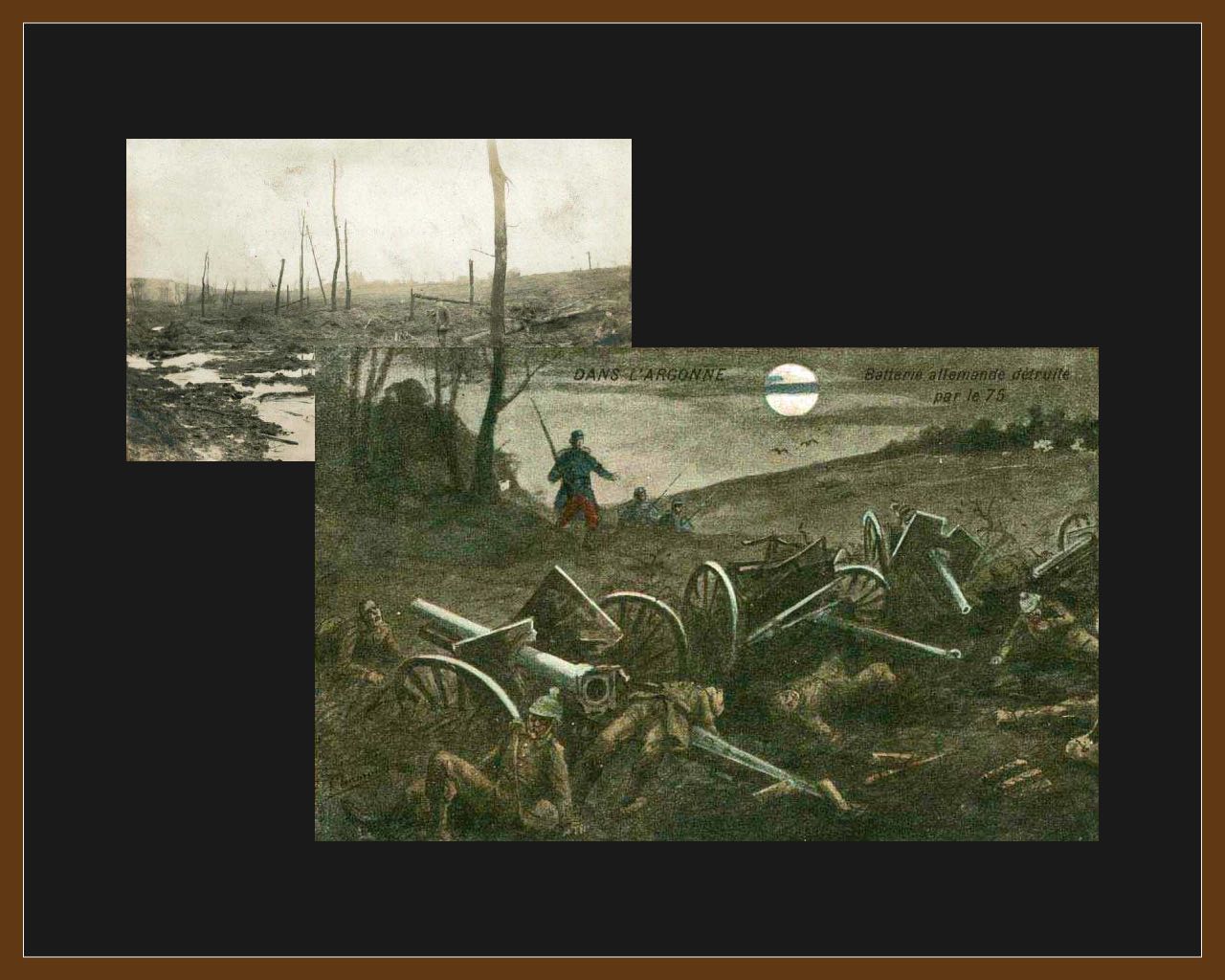
World War I ended with 30 million people killed. The Allies then imposed harsh treaty terms on Germany, including the transfer of territories to France and Poland. Multi-ethnic Upper Silesia was too complex to simply wrest away from Germany, so the Allies set a 3-year timetable for a regional vote to determine its status.
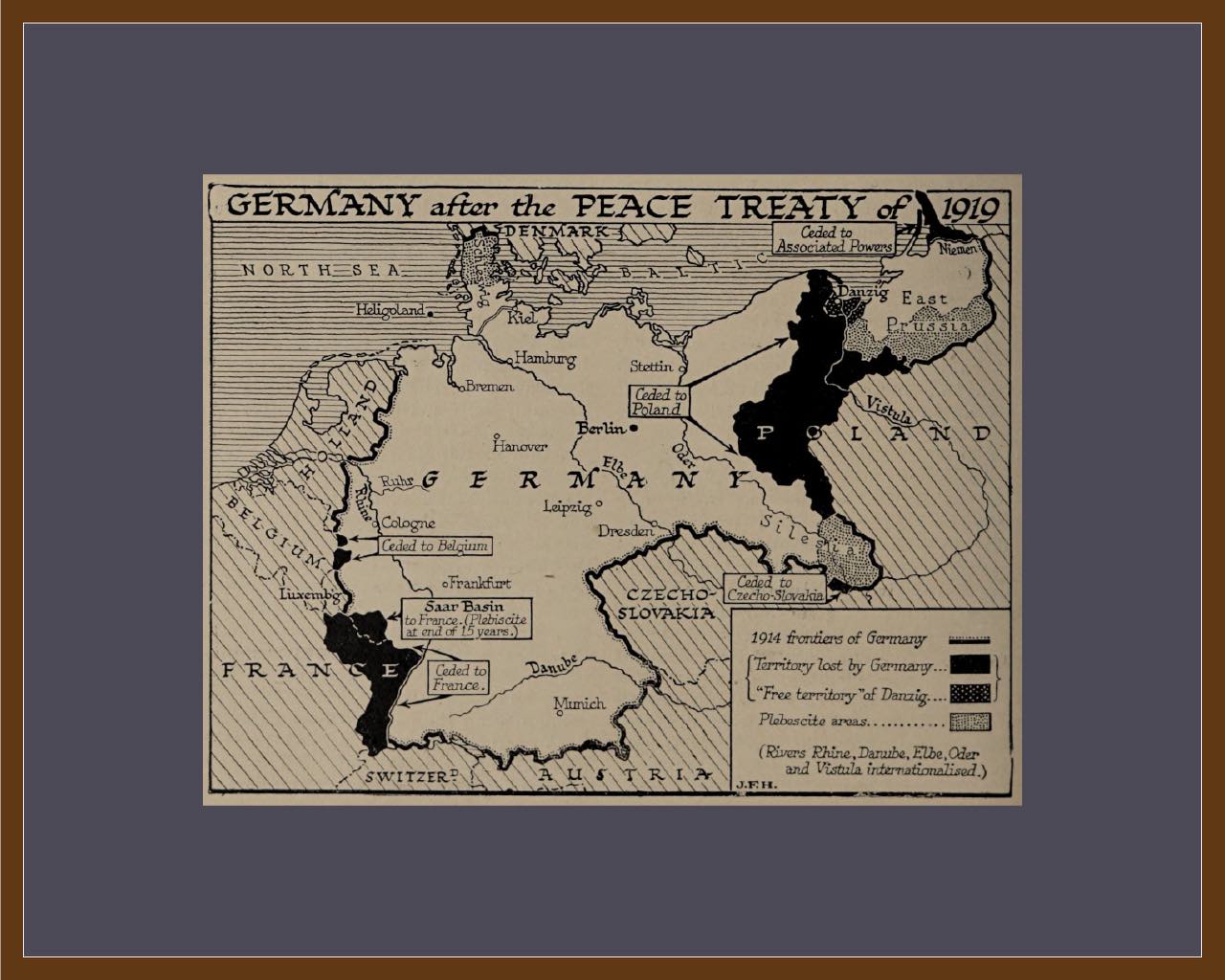
Treaty of Versailles imposed territory concessions on Germany.
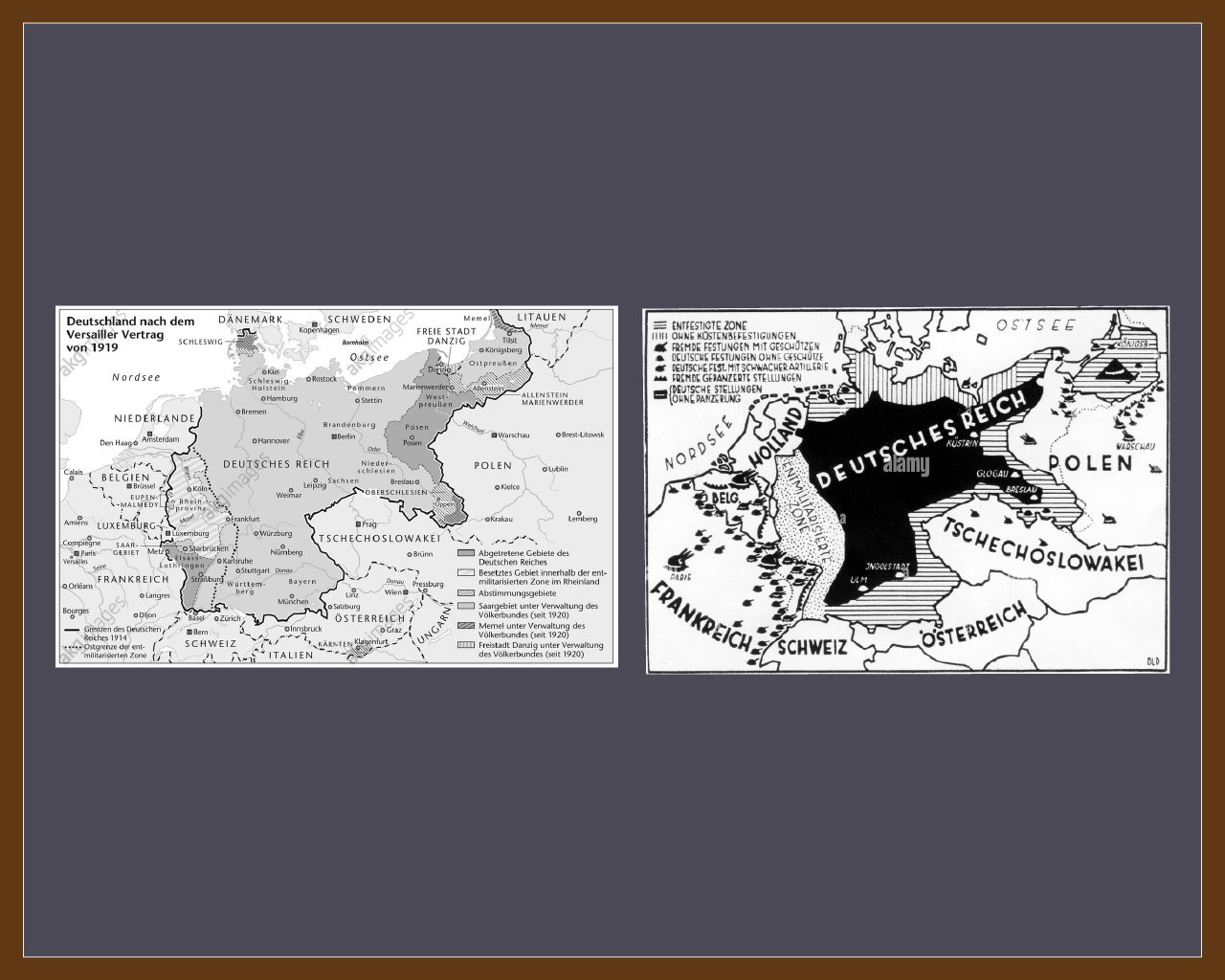
Actual territory losses imposed by the Allies -vs- Germany's perception of the losses.
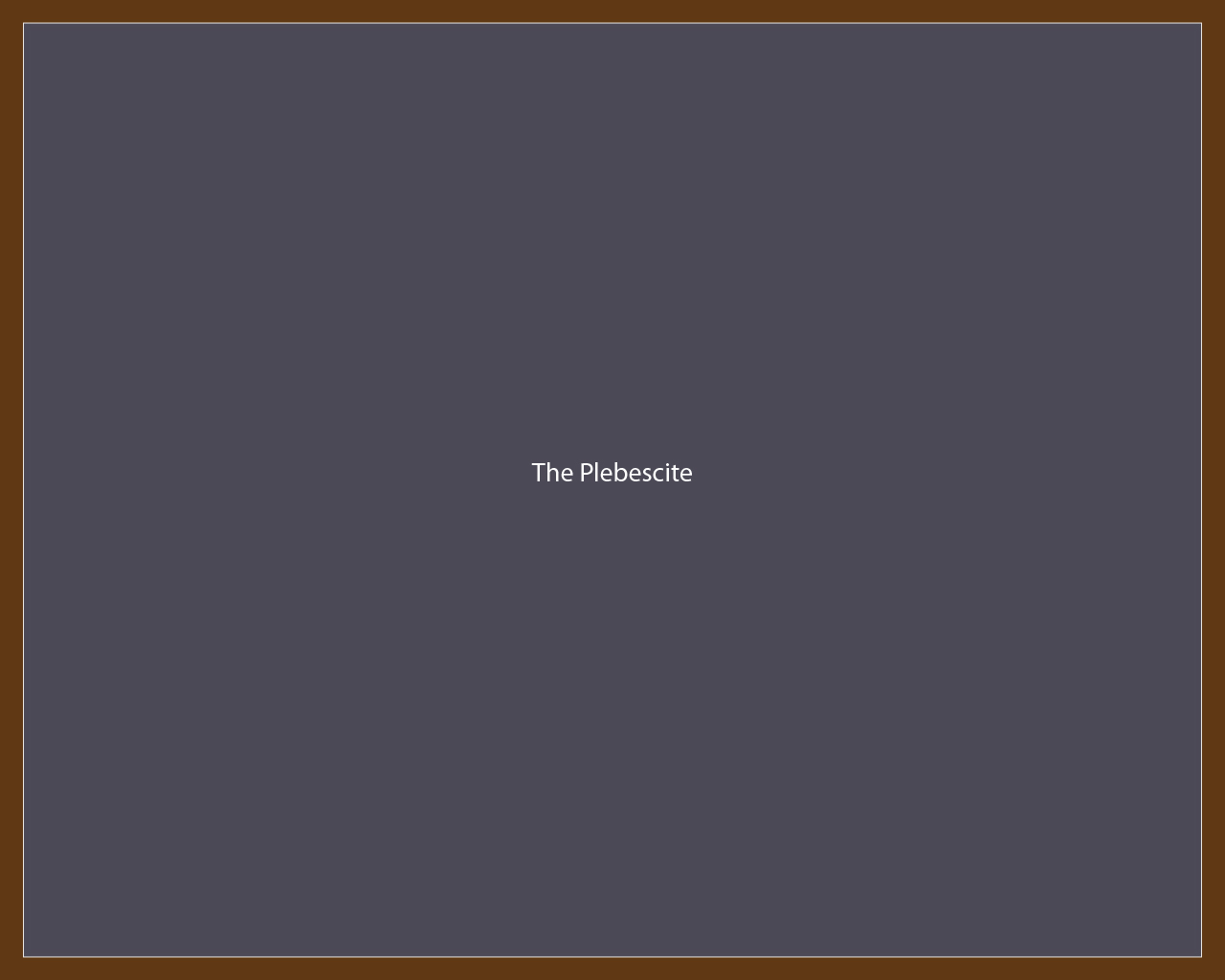
In the 3-year period before the plebescite, politicking and violence broke out.
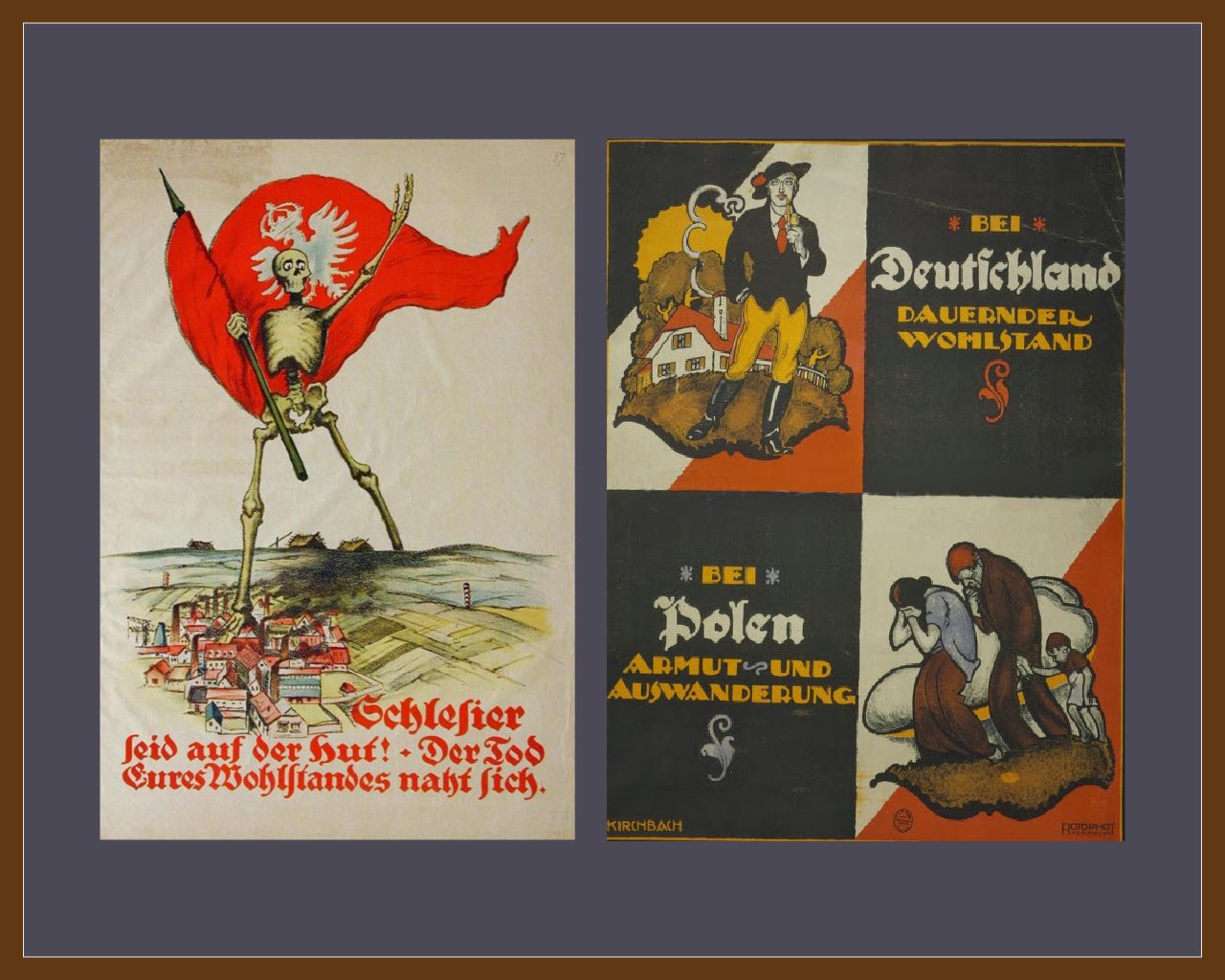
Pro-German propaganda
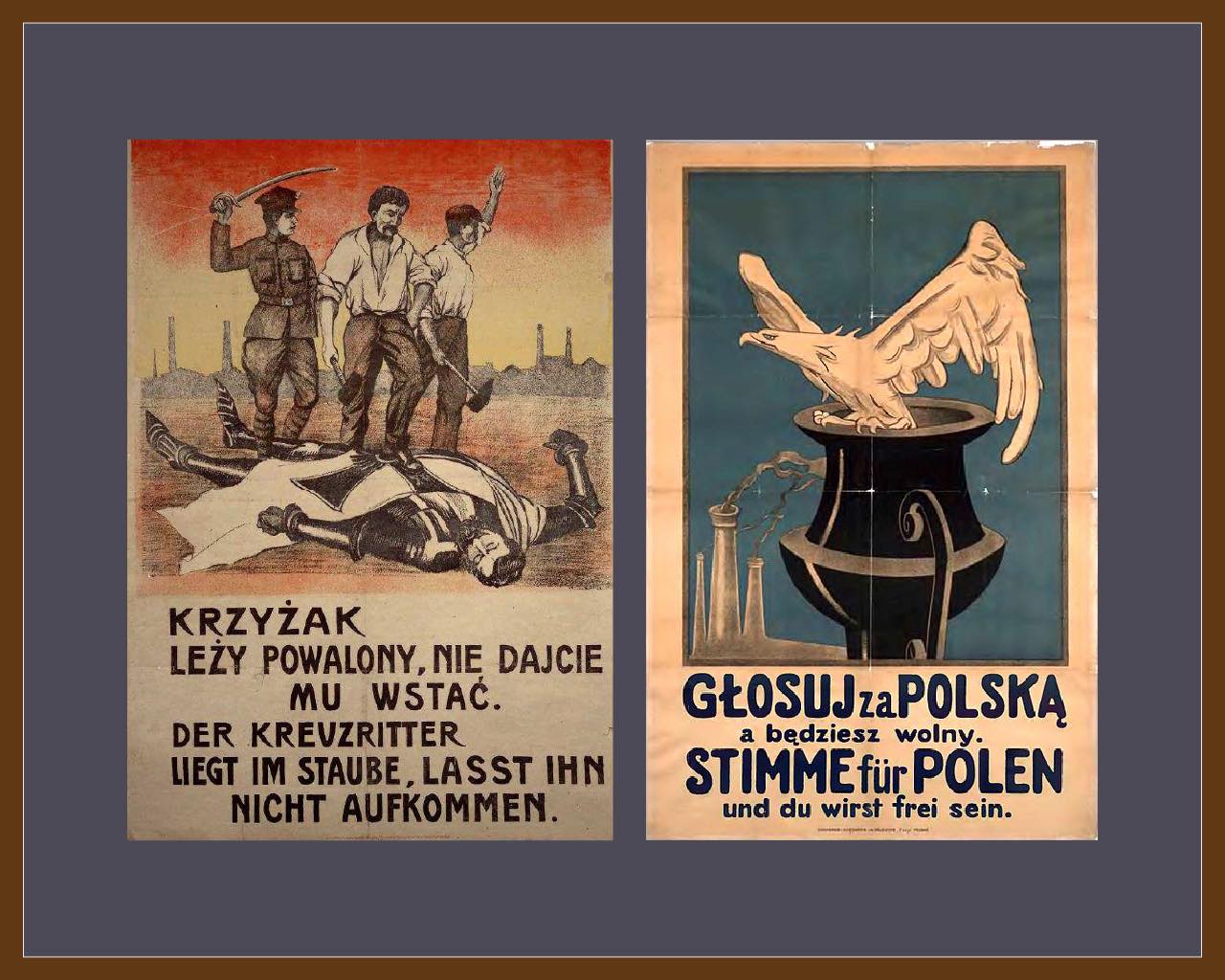
Pro-Polish propaganda
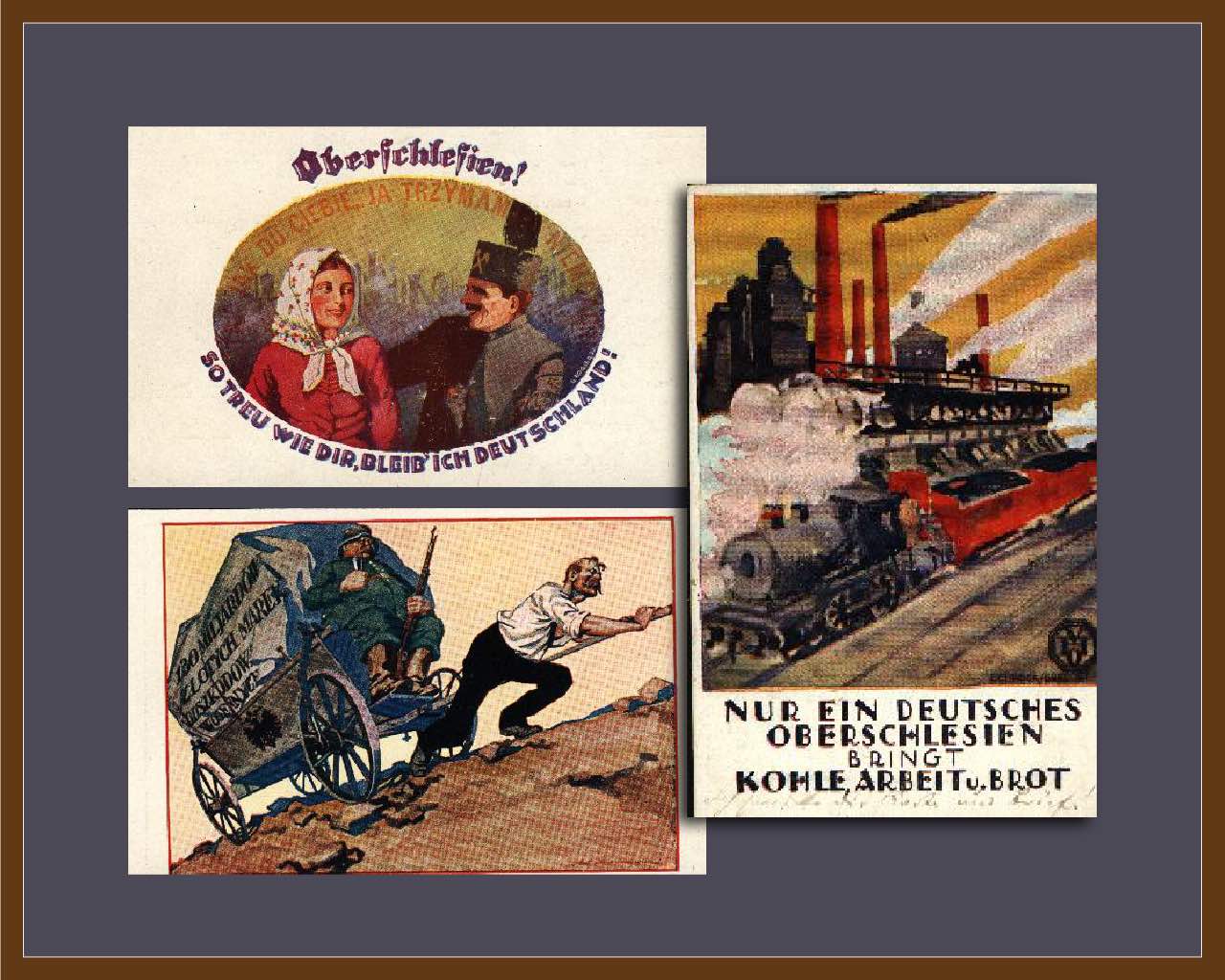
While the people were often the subjects of the many posters, the real objectives were focused on the industrial region -- and the factory owners were voting for Germany.
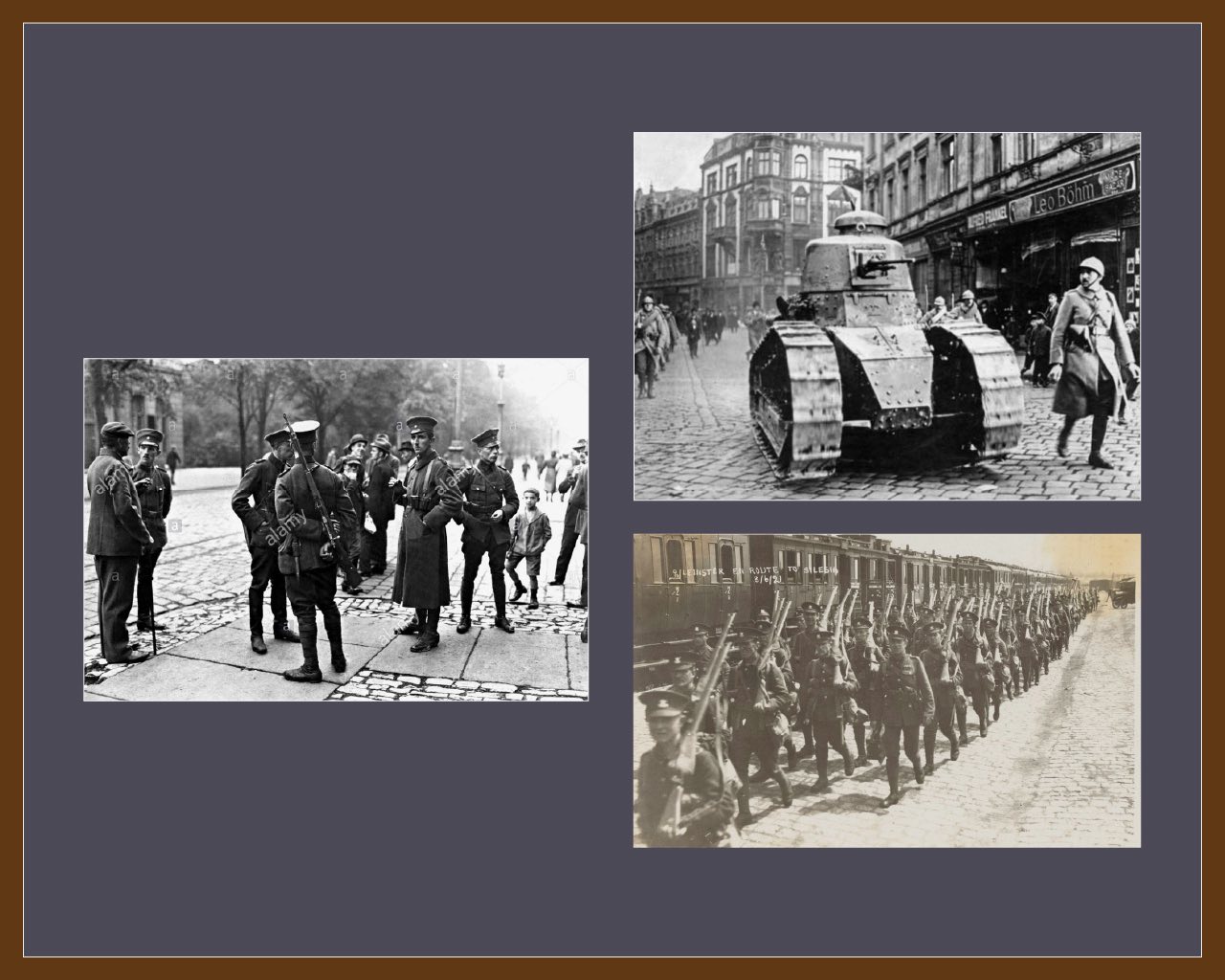
1921- German Freikorps volunteers battle Polish insurgents; French troops rush to patrol Kattowitz; peacekeeping British troops arrive in Gleiwitz.
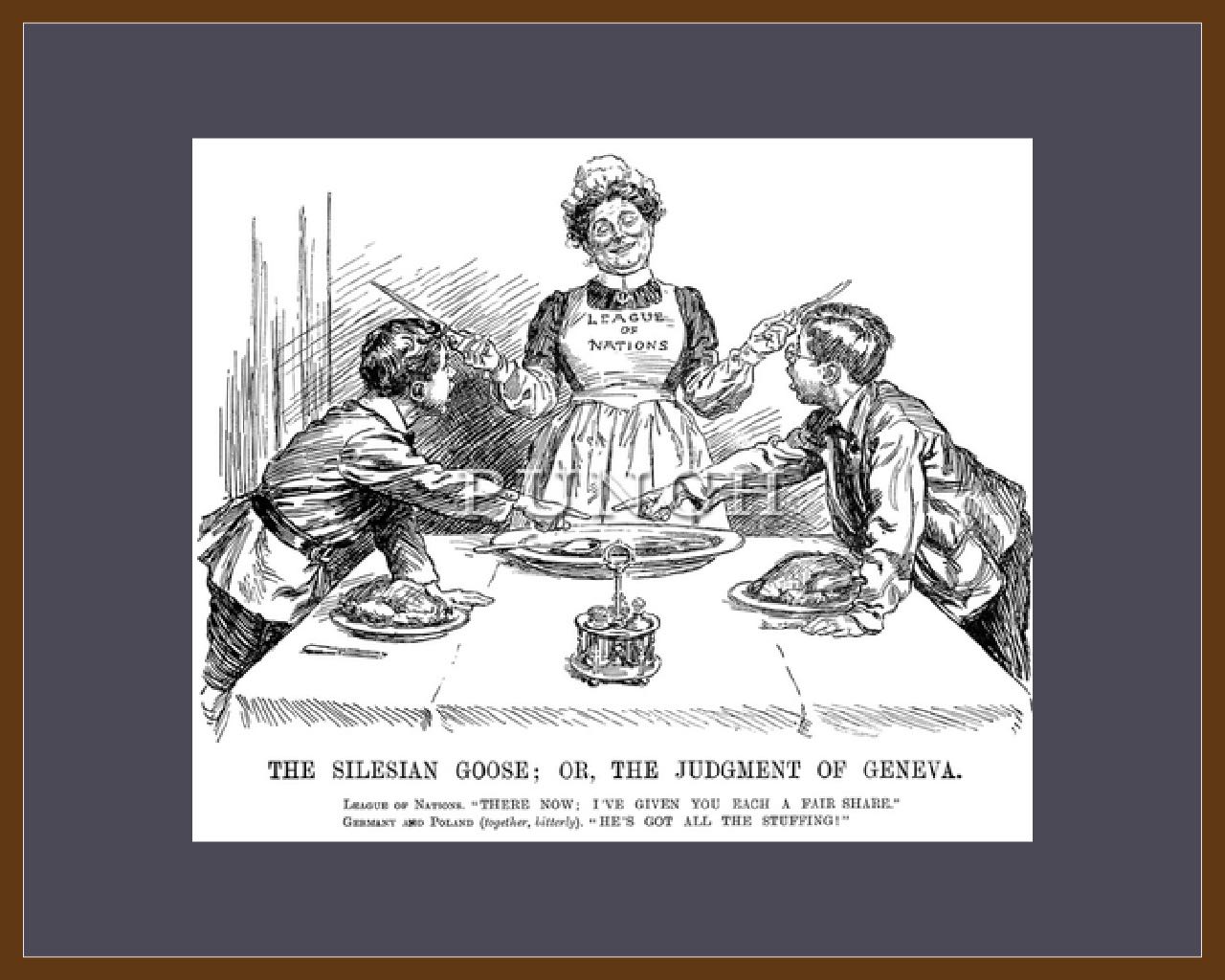
The Plebiscite results came in: Germany had won the vote for Upper Silesia by a measure of 59% to 41%. But several counties on the eastern side of the Oder river had voted for Poland. So the League of Nations interpreted that Poland should receive that small slice at the end of Upper Silesia -- the county (Kattowitz) that contained more than 80% of the coal mines and heavy industry.
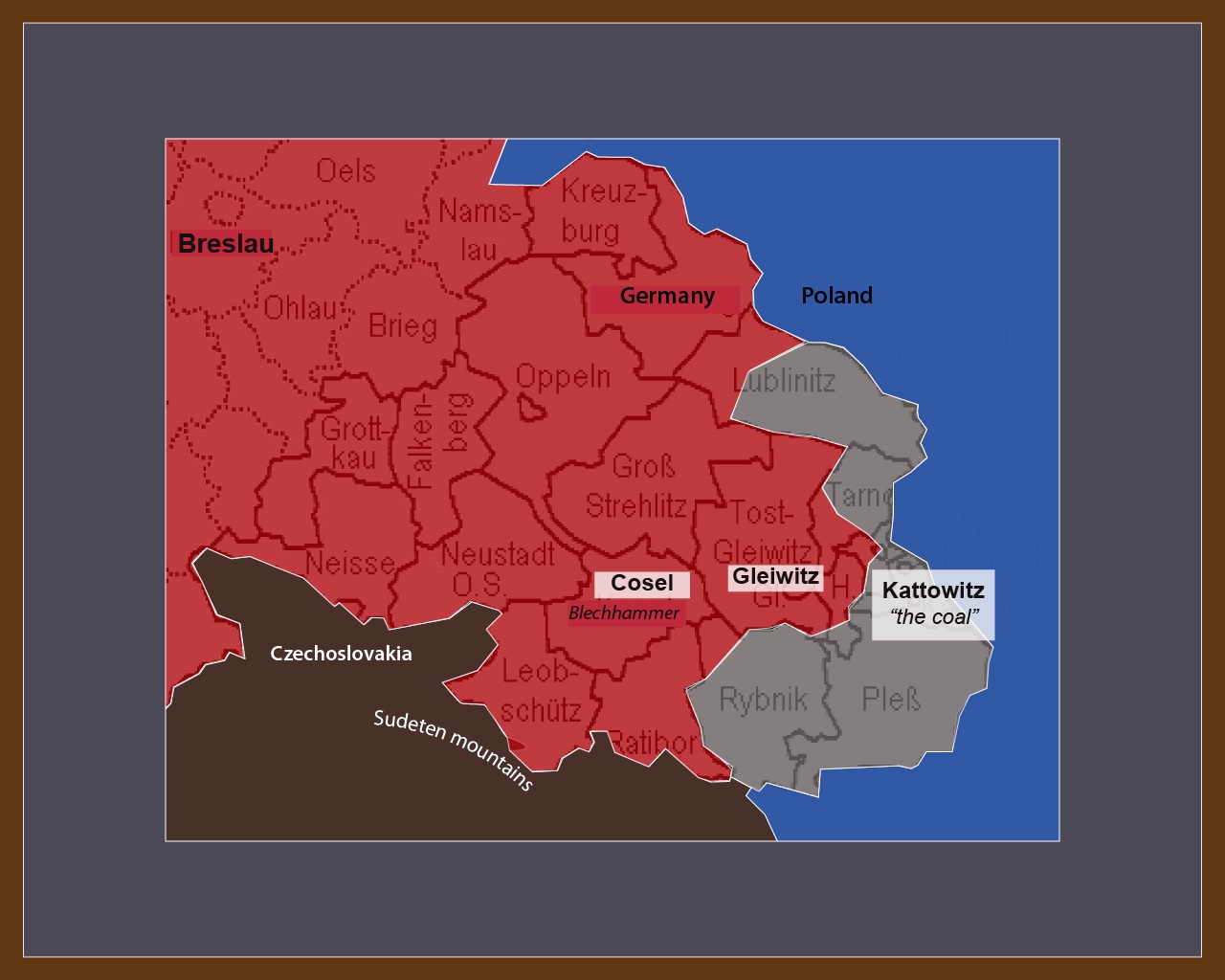
In 1921, Germany had no choice but to accept the terms. In the 1930s, a resurgent Nazi Germany was determined to reverse this loss, and more ...
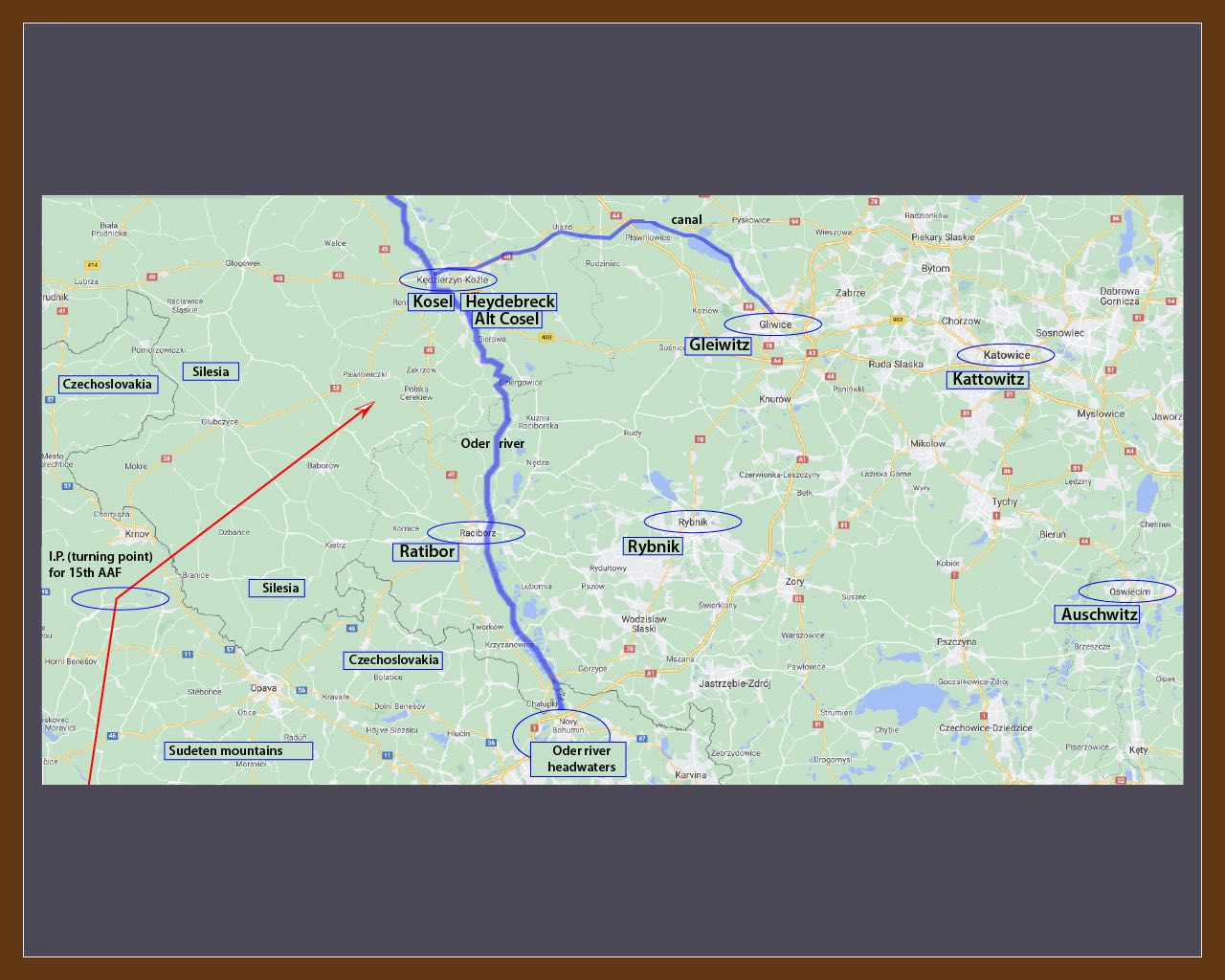
Modern map of Upper Silesia with prominent place-names.

blank page
© Pappas Family Foundation - 2023